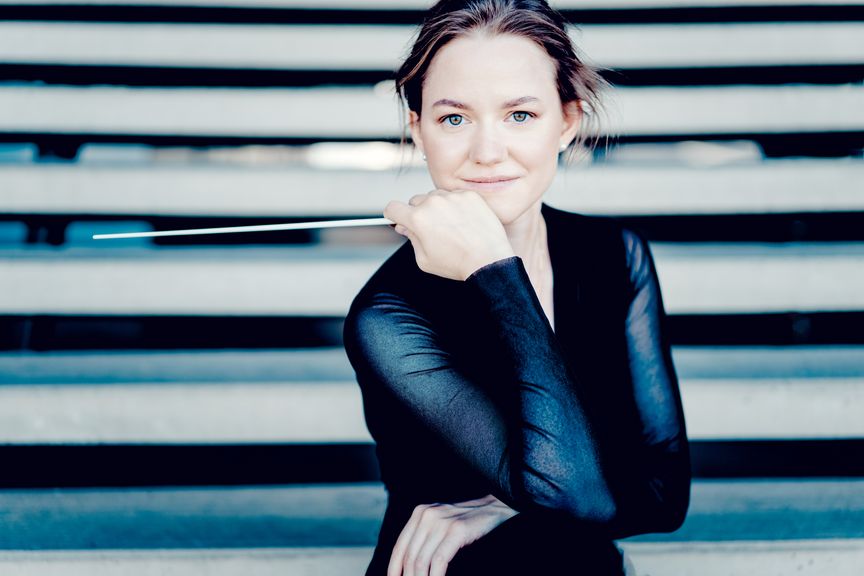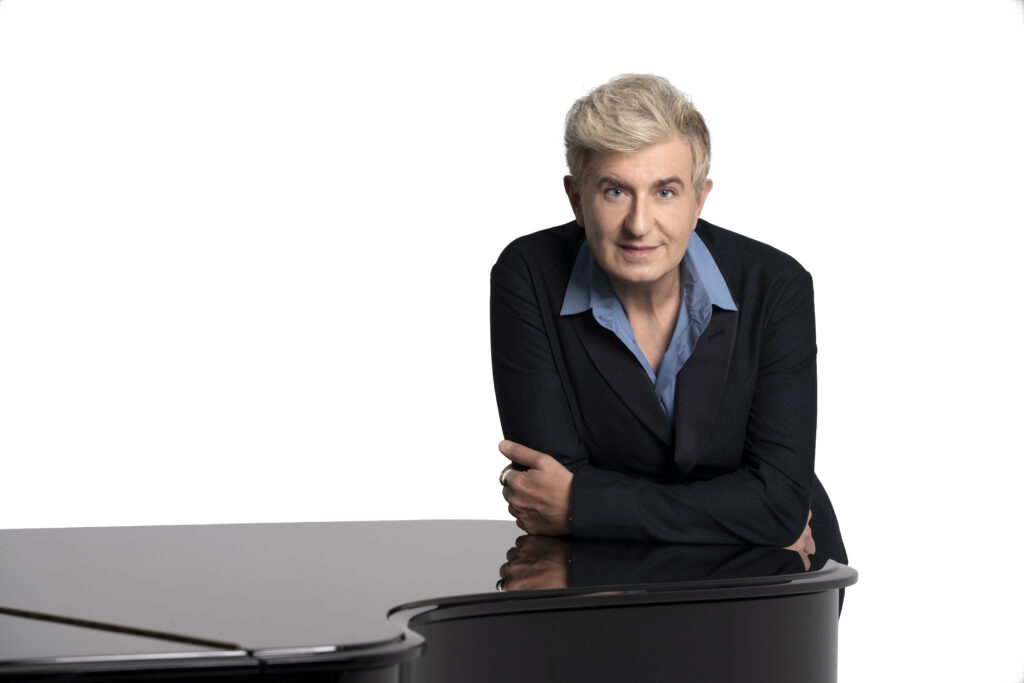NSO, Thibaudet tell lively stories through music at Wolf Trap

Katharina Wincor conducted the National Symphony Orchestra Friday night at Wolf Trap. Photo: Andrej Grilc
“The magic of storytelling,” was how Nicole Lacroix, WETA Classical’s afternoon host, described the theme of Friday evening’s National Symphony Orchestra concert at Wolf Trap’s Filene Center in brief remarks before the performance.
Katharina Wincor, the 29-year-old Austrian-born conductor, began the storytelling with The Sorcerer’s Apprentice. Made famous in Walt Disney’s 1940 animated film Fantasia, Dukas’ symphonic treatment of Goethe’s poem tells of a magician’s assistant who, when the boss is away, attempts to use a magic broom to disastrous effect.
From the violins’ opening pianissimo, Wincor’s enthusiasm for the score, which she ably communicated to the orchestra, was apparent. Moreover, her use of contrasting dynamics and well-shaped phrases conveyed the music’s mysterious and scary moments. The chaotic climax stood out, with trumpets and trombones blaring, at times a bit too loudly, as the hapless apprentice struggles in vain to regain control. Wincor also effectively conveyed the coda when calm is restored as she cajoled an atmospheric solo from the contrabassoon.
Gershwin’s Concerto in F is not a story as much as an evocation through classical and jazz idioms of various settings. The first movement is said to represent the excitement and bustle of New York City. Indeed, Gershwin called his original sketches for the piece “New York Concerto.”

Jean-Yves Thibuadet performed Gershwin’s Concerto in F with the NSO Friday night. Photo: Elisabeth Caren
Piano soloist Jean-Yves Thibaudet displayed a virtuosic touch throughout the concerto, easily dispatching Gershwin’s numerous glissando passages, crossing left hand over right deftly. He also was comfortable in the bluesy and ragtime sections weaved into the work, elements that sometimes seem awkward and unidiomatic when played by classical artists.
Thibaudet was in sync with Wincor and the orchestra’s approach to the music, with energy and speed taking priority.
Fortunately, Wincor’s energetic tempi didn’t pose an issue for Thibaudet, and for the most part the orchestra’s accompaniment was well executed, though Wincor’s overzealous accompaniment at times made it difficult to hear the soloist.
In contrast to the boisterous outer movements, Wincor, Thibaudet and the orchestra were at their most musical in the second movement, which begins with a bluesy trumpet solo, NSO principal trumpet William Gerlach using a felt hat over his instrument’s bell to create a soulful and slightly distanced effect. Thibaudet let the music breathe in the slow movement, taking his time between phrases, which made his cadenza a highlight of the evening.
The concert closed with one of the most well-known orchestral stories, Rimsky-Korsakov’s Scheherazade.
Wincor did her best conducting here, presenting a disciplined, well-interpreted rendition, and avoiding the trap of playing with speed and sound purely for effect.
Instead, Wincor seemed intent on patiently telling the story of Sinbad’s ship, the Arabian Knights, sultans and, of course, the princess, Scheherazade, represented by a solo violin, played gorgeously by Ying Fu, the orchestra’s associate concertmaster.
By no means was Wincor’s interpretation without bombastic moments, however. Horns, trombones and tuba supplied bursts of energy and appropriate mayhem, approximating battles on the seas and in palaces. The strings provided ample color and mystery in their renditions of Scheherazade’s theme.
There are few pieces that display an orchestra’s wind soloists more than Scheherazade. And the principal bassoon, oboe and flute shone, making a hot, humid evening slightly more comfortable. Particularly impressive was Lin Ma, the principal clarinet, who was equal to Wincor’s vigorous tempi, dispatching Rimsky-Korsakov’s quicksilver runs with flawless technique that made them seem effortless.
As the piece came to an end, Wincor deftly returned the music to where it began, with Scheherazade’s theme sounded by Fu, his sustained violin note sustained over a soft reprise of the composition’s ominous opening.